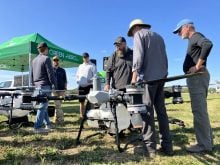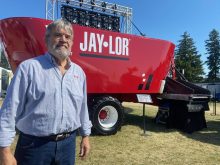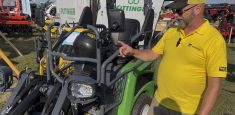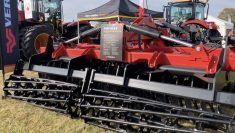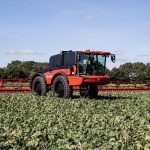Fresh from a visit to advise Foam Lake, Sask. crop farmer Dickson Delorme – a.k.a. Quick Dick McDick of ag-themed YouTube fame – about grain loss from his combines, Kris Kristjanson joined fellow representatives of the Bushel Plus company at the recent Canada’s Outdoor Farm Show (COFS) at Woodstock.
The flagship product of the company, started in 2018 by a German farm kid but headquartered in Brandon, Man., is a 40-inch drop pan that can be easily attached by magnets to the underside of any combine. After a small amount of crop is harvested, the pan is dropped and farmers can use an included scale, air separator and smartphone app to quickly determine how much threshed grain isn’t making it into the combine’s hopper.
Why it matters: The Bushel Plus app can calculate dollars per hour lost due to spilled grain. Kris Kristjanson says $1,000 per hour loss is common but when combines aren’t running properly he has seen losses in canola as high as $2,500 per hour.
Read Also
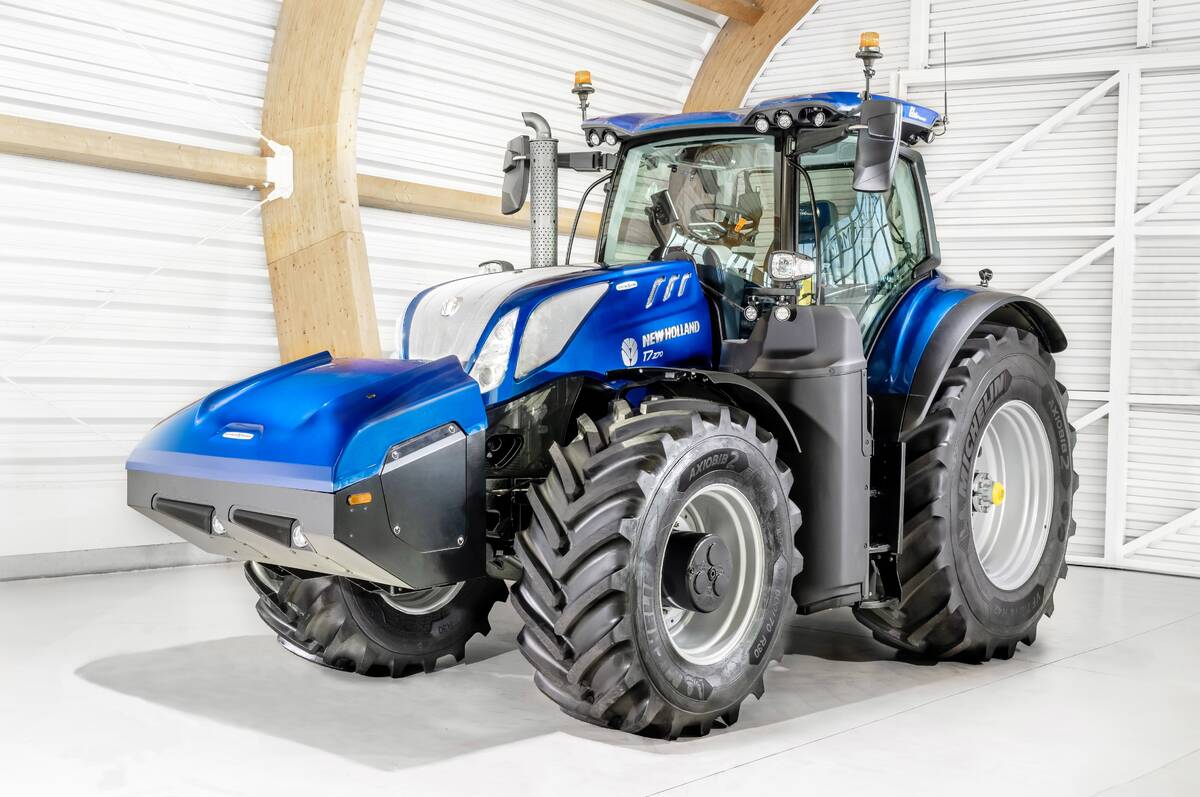
New Holland T7.270 Methane Tractor to Debut at Agritechnica Show in Germany
New Holland will unveil its production-ready version of a T7.270 methane-powered model tractor at Agritechnica in Germany.
In the Quick Dick McDick example, Kristjanson said one machine was losing 6.5 bushels of grain per acre. “It took me three hours to figure it out. I checked out all the settings on the combine and tried a few different things.”
After determining the concaves had not been calibrated to zero before being set, Kristjanson was able to bring grain loss on that machine to an acceptable 0.9 bushels per acre.
[VIDEO] The cost of harvest loss
The company’s goal when taking on new customers is to sell products and help farmers reduce combine grain loss.
“While working as an agronomist around the world, company founder (Marcel Kringe) saw large amounts of wasted grain,” says the “About Bushel Plus” section of the company’s website. It tells the story of Kringe relocating to Canada, working with equipment specialists and fellow agronomists to develop the “Harvest Loss System,” and narrowly escaping death in a vehicle collision while promoting the product in Australia. That led to nearly two years of rehabilitation while his employees toiled to build the company.
The daily sessions at COFS began with a rundown of the common sources of grain loss.
“You worry about stuff going out the back but sometimes there’s more going out the side” due to maintenance issues on the knife, dividers, reels or augers. Examples include a divider sticking out of position and shelling grain as the crop comes through the header, or augers not feeding quickly enough so the crop is pushed forward of the knife and knocked around enough to shell out, Kristjanson said.
The big culprits, however, are most often sieves and concaves. Operators should confirm they’ve been calibrated correctly.
Without that, the settings may not reflect what’s actually happening.
“Once you get them calibrated, leave them there. They find their sweet spot.”
If grain loss problems arise later in the day, when moisture conditions change, adjustments to rotor speed or fan speed can generally extend the harvest window.
Kristjanson likened the loss monitors available on newer combines to “measuring with a tape measure that doesn’t have any numbers on it.” They may monitor loss but there’s nothing to benchmark this against.
He suggests using the Bushel Plus system to set a benchmark, then calibrating the combine’s loss monitor based on this result.
Then operators will know if maintenance problems arise and will be able to make an informed decision on when to stop later in the day if conditions get tough and grain loss rises.
Bushel Plus also offers a 20-inch drop pan for plot and research combines and a 60-inch pan that can collect a sample from the entire width of the sieves while dropping straw and chaff in a windrow.
The company captured the Innovation Award in the equipment category of this year’s COFS for its new Bushel Plus Mini-Combine, a battery-powered, hand-held drill-type tool that allows farmers to quickly collect crop samples from various spots in a field for quality or moisture testing.




